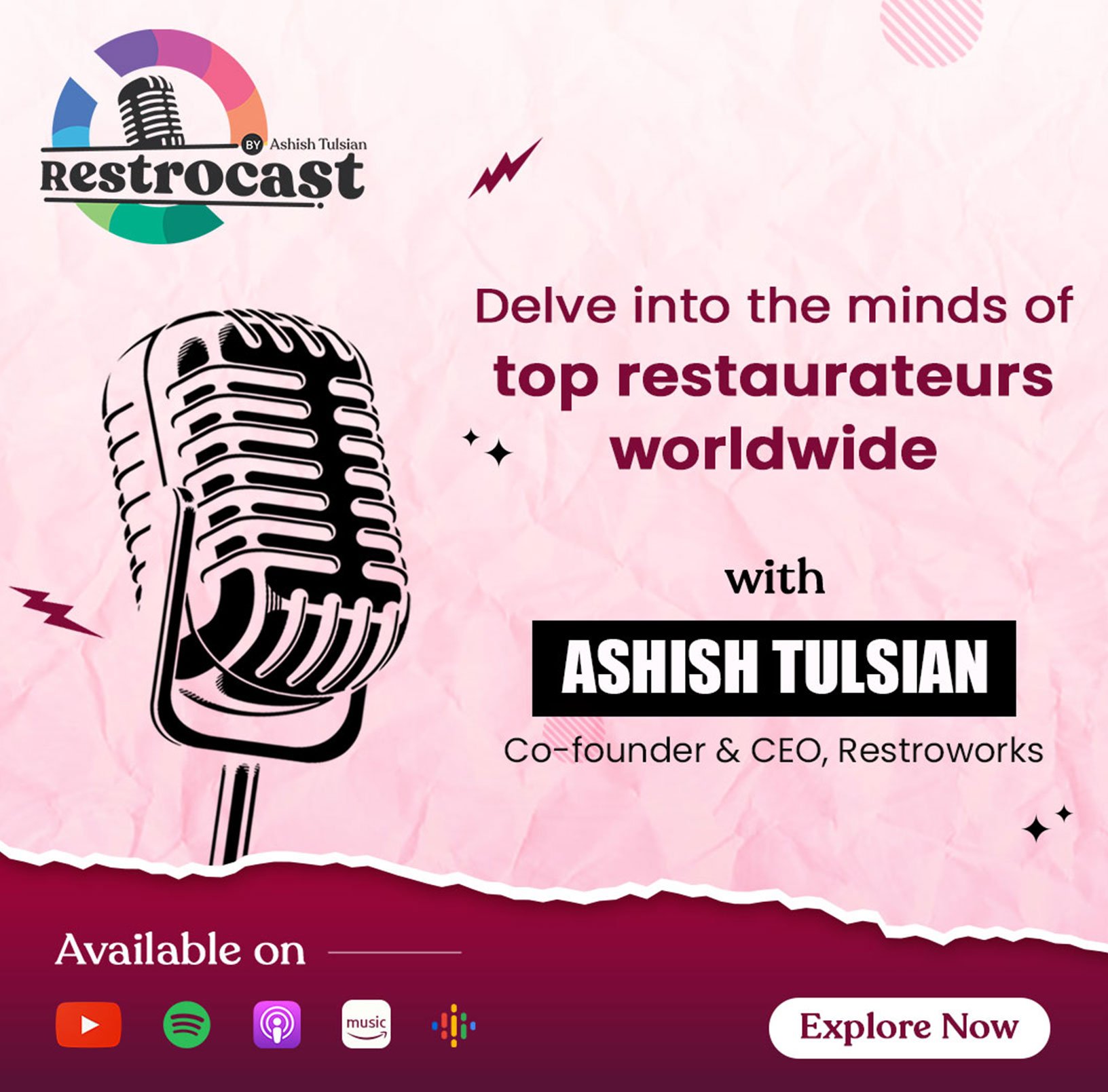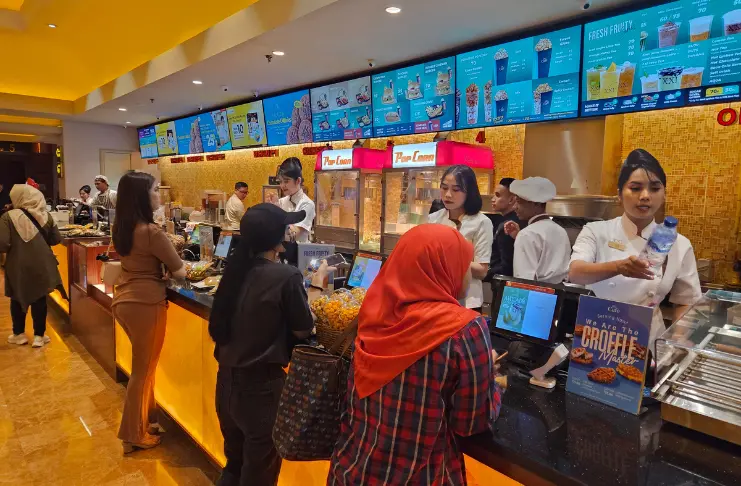
In a quick-service restaurant, every second counts. A guest who waits too long, receives an incorrect order, or struggles with a clunky digital menu may not return, no matter how good the food is. For your QSR, customer satisfaction is a direct reflection of your operational efficiency and consistency of services.
As a result, creating a superior dining experience requires understanding what drives customer loyalty, streamlining service, and creating a seamless interaction at every touchpoint. Because every element, from order accuracy and wait times to staff interactions and digital interfaces, shapes how guests perceive your restaurant.
So, how can you achieve higher customer satisfaction? This blog will explore what makes up a positive QSR environment and dive into actionable strategies to help you improve the quick service restaurant dining experience.
What is a Quick Service Restaurant Dining Experience?
A Quick Service Restaurant (QSR) dining experience captures how efficiently a restaurant serves its guests while maintaining quality and consistency. It combines speed, service, and operational reliability in a way that ensures customer satisfaction and encourages repeat visits
In QSRs, satisfaction comes from the seamless coordination of multiple elements, from order placement to food preparation and delivery, both in-store and through digital channels.
Restaurant businesses that focus on creating a smooth and predictable experience can differentiate themselves in a competitive market. This involves attention to workflow design, staff interaction, and system integration to handle high volumes without compromising service quality.
Key Characteristics of QSR Dining Experience
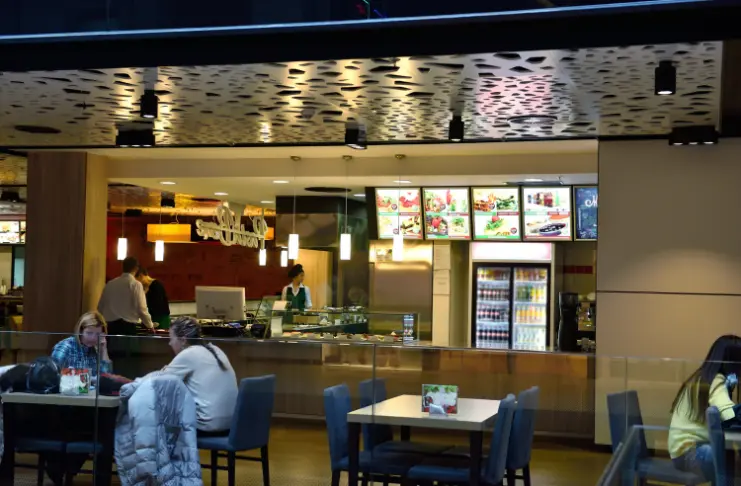
Quick Service Restaurants (QSRs) have carved a niche in the food service industry by offering a dining experience that prioritizes efficiency, consistency, and convenience.
Customers love what these establishments have to offer, so much so that nearly 9% of consumers visit QSRs 15 or more times a month, with 57% of this group being between the ages of 25 and 44.
Here’s what makes them a popular dining format among customers-
- Limited Menu: QSRs typically offer a streamlined menu featuring a select number of items. This approach helps achieve quicker preparation times, easier inventory management, and consistent quality across all locations. By focusing on a limited range of offerings, QSRs can maintain high standards and reduce complexity in kitchen operations.
- Quick Service: Speed is a hallmark of the QSR experience. Customers place an order and receive their food promptly, often within minutes. This rapid service is achieved through efficient kitchen workflows, optimized staffing, and streamlined ordering processes, ensuring minimal wait times and high customer turnover.
- Affordability: QSRs are known for offering budget-friendly meal options, often lower than those of full-service or casual dining restaurants, making them a popular choice for customers seeking an affordable dining experience.
- Self-Service Flexibility: Unlike full-service restaurants, QSRs typically do not offer table service, which makes self-service an essential component of the dining experience. Many QSRs provide options such as kiosks, mobile apps, or drive-thru lanes, allowing customers to place orders, customize their meals, and complete payments independently. This gives guests greater control over the ordering process while reducing wait times.
- Product Consistency: QSRs are built around standardized processes that ensure food quality, taste, and preparation remain uniform across every location. By using precise recipes, structured training, and strict quality control measures, they maintain a consistent product regardless of volume or location.
Elements of a Positive QSR Experience
Creating a positive dining experience in your QSR or fast casual restaurant isn’t limited to getting the food out quickly; rather, it must focus on making every interaction seamless and satisfying. When you focus on the right elements, you ensure that customers leave happy and return often.
Here are the various components of a successful QSR operation that define customer experience-
1. Speed of Service
Efficiency is at the core of the QSR model. About 48% of customers today choose a QSR based on the speed of service it offers. Which means you must meet this customer expectation that orders are handled and delivered quickly.
When your team can handle peak hours without delays, you reduce frustration and keep the line moving. Integrating a workflow where each station knows its role, and orders move seamlessly from kitchen to counter or drive-thru, ensures that your guests leave with a positive impression every time.
2. Quality of Food
Even in a high-speed environment, food quality can’t take a backseat. Customers will only come back if the food tastes fresh and meets their expectations every time, so maintaining consistent flavor, freshness, and presentation is essential.
This is where standardized recipes and quality control measures help ensure that each meal meets your brand standards. At the same time, it is important to implement routine checks at various prep stages and train the kitchen staff to the highest quality standards.
3. Seamless Ordering and Payment
The ordering and payment process should feel intuitive and frictionless. Whether your customers are ordering at the counter, at the table, through a kiosk, or using a mobile app, every touchpoint should reduce wait times and minimize errors.
Offering multiple payment options, including contactless payments, ensures convenience and speeds up transactions. When your system anticipates common pain points, like incorrect orders or slow payments, you create a smoother flow that keeps customers coming back.
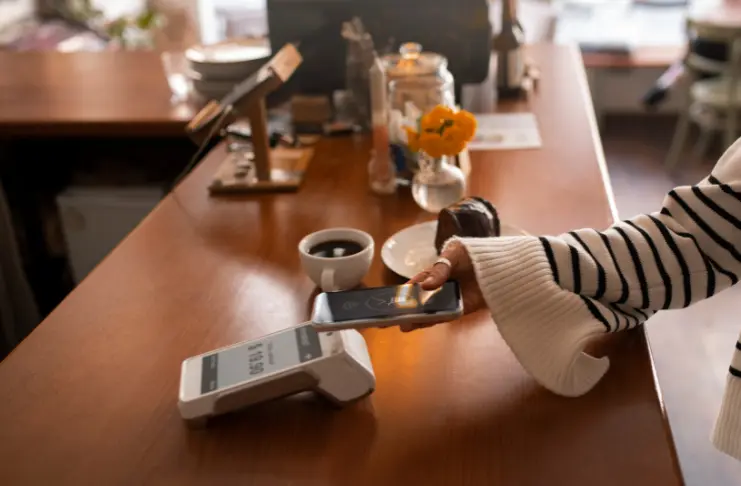
4. Level of Personalization
Customer engagement and personalization in QSRs can significantly impact customer satisfaction. This involves tailoring recommendations based on customer preferences, offering loyalty rewards, and addressing any customer complaints promptly, which can create a more positive and memorable experience. Personalized interactions make customers feel valued and can increase their likelihood of returning.
5. Cleanliness and Hygiene
A clean restaurant signals quality and care. Your customers notice spotless dining areas, tidy restrooms, and well-maintained food prep spaces.
Regular cleaning schedules, visible sanitation practices, and adherence to health regulations reassure guests that they’re in a safe, trustworthy environment. Cleanliness directly impacts perception of your brand and encourages customers to return.
How to Improve QSR Experience for Customer Satisfaction?
1. Focus on the QSR Environment
Most often, the physical environment of your fast food restaurant makes the first impression on your restaurant guests. Guests notice details like lighting, layout, and seating before they even interact with your staff. If the space feels confusing to navigate or poorly maintained, it can create friction right away.
A smart layout reduces bottlenecks during peak hours. Clear pathways to counters, kiosks, and pick-up areas keep traffic moving, while good signage eliminates the guesswork about where to order or collect food.
Similarly, QSR drive-thrus also benefit from thoughtful planning with multiple lanes, well-placed digital menu boards, and visible payment points to help customers move through quickly without frustration.
Finally, small environmental touches like uncluttered counters and tables, and accessible trash bins also influence comfort and show attention to detail. When you treat your space as part of the customer journey, efficiency naturally aligns with comfort, and customers feel more at ease returning.
2. Create a Seamless Ordering Flow
Ordering should feel effortless from start to finish. Any confusion or extra step increases the chance of mistakes and slows down service. Instead of relying on one ordering method, build a system that connects multiple channels such as kiosks, mobile apps, drive-thru, and counter service. This is a good way to distribute the demand more evenly and reduce wait times.
However, to make things work efficiently, every touchpoint must work together to prevent delays and miscommunication. For instance, orders placed through an app should sync instantly with the kitchen, and kiosks should display real-time menu updates so customers don’t see items that are unavailable.
Testing the flow regularly, as if you were a first-time guest, helps spot small frustrations before they affect real customers. When ordering feels smooth and predictable, guests walk away with confidence in your service.
3. Invest in Technology
The right technology strengthens both the customer journey and your staff’s ability to deliver it. On the customer side, digital ordering channels like self-service kiosks and mobile apps minimize errors and give guests more control over their choices. Pairing these with flexible payment options, such as contactless wallets, creates a faster, more convenient transaction.
On the other hand, kitchen technology such as AI-driven forecasting tools helps predict order volumes and prep needs, reducing food waste while ensuring staff aren’t overwhelmed during peak times.
Real-time digital menu boards then tie the two ends together, updating items instantly so staff don’t waste time explaining stockouts, and customers see only what’s available.
You can also invest in integrated back-of-house systems that help manage inventory and operational flow. By tracking performance data, from average ticket times to customer satisfaction scores, you gain insights to refine operations, handle inventory availability more effectively, and maintain product quality.
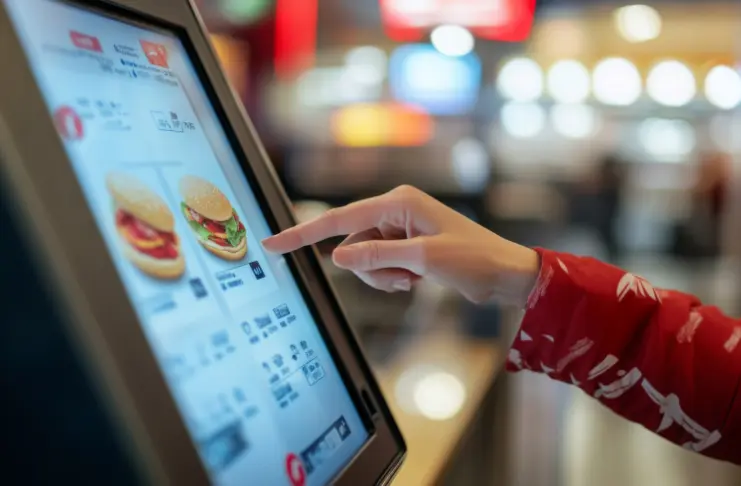
4. Train Your Staff
While technology helps enhance your restaurant’s flow and operations, human interaction is still central to the overall experience. This makes it critical to offer comprehensive staff training, encompassing standard business procedures, communication skills, problem-solving, and adaptability.
When a guest has a special request or when an order goes wrong, your staff’s ability to respond quickly and professionally can turn a negative moment into a positive one.
So, start by establishing a strong foundation with refresher workshops, role-playing exercises, and cross-training that will build confidence and reduce turnover. You can also use technology to support your training programs.
For instance, digital dashboards or gamified learning modules keep staff engaged while ensuring consistency across multiple locations.
By investing in your team, you not only improve daily operations but also create an environment where employees feel motivated to deliver their best, something customers will notice.
5. Prioritize Health and Hygiene
For many guests, cleanliness and hygiene are non-negotiable. A spotless environment creates a good impression, and in foodservice, it’s directly tied to trust.
For this, set strict cleaning routines for dining spaces, restrooms, and prep areas, and make them transparent. Posting cleaning schedules or using digital displays to highlight recent sanitation checks reassures customers that standards are being maintained.
In the kitchen, enforce proper food safety protocols and use tools like temperature monitoring systems to protect both staff and guests.
Additionally, small details, like sanitizer stations at entrances or labeled waste bins, add up to a bigger impression of professionalism. When hygiene practices are consistent and visible, you reduce risks while also strengthening brand reputation.
6. Take Customer Feedback Seriously
No matter how many changes you make, if you aren’t prioritizing exactly what your restaurant guests want, the restaurant experience will suffer. Take customer feedback in real-time — from digital surveys at the end of mobile orders, QR code feedback forms on receipts, or quick touchscreen polls at kiosks.
But collecting feedback isn’t enough; act promptly. If multiple customers flag slow drive-thru service or confusing menu layouts, those are operational gaps you can immediately address.
Further, once the feedback is implemented, let the customers know too. For instance, installing signage that says, “You asked, we added,” or app notifications highlighting menu improvements based on feedback is an excellent way to show that their voices matter.
This transparency not only builds loyalty but also positions your brand as responsive and customer-centric in a competitive market.
EXPERT OPINION
Isabelle Zdatny, head of thought leadership at Qualtrics XM Institute, says, “Any friction that slows them [customers] down, like a confusing kiosk ordering process, gets in the way of that immediate gratification. CX leaders should prioritize meeting this expectation to build customer preference and loyalty.”
How to Track the QSR Dining Experience?
To determine whether your improvements are effective, you must measure. Tracking the right metrics tells you what’s going well, what needs fixing, and whether customer satisfaction is really rising.
These are five critical metrics you should track to understand customer experience and satisfaction-
1. CSAT Scores
CSAT (Customer Satisfaction) measures how satisfied guests are with a specific interaction, say, the order pickup or the cleanliness of your dining area. You can collect CSAT by sending short surveys right after a key moment (receipt, digital app, exit feedback), which asks questions like, “How satisfied were you with your drive-thru service today?” and uses a simple scale.
To make CSAT meaningful-
- Send them immediately after the touchpoint so the experience is fresh.
- Keep them short (3-5 questions).
- Segment by channel (in-store, drive-thru, app) to see where satisfaction varies.
CSAT is powerful customer feedback tool because it gives you a heads-up on specific improvements you can make right away.
2. Speed of Service
Speed is a visible performance metric. You can track this using timestamps at multiple stages: when the order is placed, when food leaves the kitchen, and when the guest picks it up or it’s delivered.
To measure your speed of service, you can track the following metrics-
- Order-to-pickup time
- The time the customer waits in the counter/drive-thru queue
- App/kiosk order preparation delays
Recording these lets you spot slowdowns or bottlenecks. If you see times creeping upward, you know which stage to target, perhaps staffing, kitchen layout, or order batching.
3. Net Promoter Score (NPS)
NPS tells you how likely your customers are to recommend your QSR to others. It gives you a view of loyalty and overall brand impression rather than just how they felt in a single transaction.
Here’s how to use it-
- Send NPS surveys periodically (monthly or quarterly) rather than after every visit.
- Include open-ended follow-ups: “What would make you more likely to recommend us?” That helps reveal deeper issues or strong positives.
- Track change over time. If your NPS is rising, you’re growing your promoters. If it drops, it signals potential churn or dissatisfaction.
Combining NPS with CSAT provides a fuller picture; use CSAT for specific interactions, NPS for loyalty over time.

4. Customer Retention Rate
Retention rate shows how many guests come back over time. Knowing this helps you evaluate loyalty and whether your experience improvements are paying off in repeat business.
To track retention,
- Identify repeat visits via loyalty program data, customer profiles in your POS, or app order history.
- Define a period (e.g., 30, 60, or 90 days) and calculate what percentage of customers return in that timeframe.
- Correlate retention with satisfaction data (CSAT / NPS) to see which factors drive repeat visits.
Retention is one of the strongest bottom-line indicators because a better experience usually leads to higher return rates and more predictable revenue.
5. Online Reviews and Social Engagement
What people say online influences new customers and gives you real feedback. Reviews on Google, Yelp, social media, or food delivery apps often mention things you didn’t measure elsewhere.
- Set up alerts or use tools to aggregate reviews so you can see ratings and comments as they come in.
- Look for recurring themes; if many mention slow pickup, dirty tables, or confusing ordering, those are red flags.
- Track social engagement (likes, shares, comments) to see how people respond to new features, promotions, or changes.
By responding publicly to reviews, such as thanking positive reviewers and addressing complaints, you
show you care, reduce the negative impressions, and reinforce trust.
Conclusion
Improving the quick service restaurant experience is an ongoing process that goes beyond speed or menu offerings. Every operational decision, from ordering to restaurant environment, creates a cumulative effect on how customers perceive your brand.
When you align efficient workflows, technology, and attentive service with real-time feedback, you can build higher trust, repeat business, and long-term loyalty to achieve improved customer satisfaction.
Frequently Asked Questions
A quick service restaurant experience includes fast service with minimal wait times, standardized food quality, and a streamlined ordering process. It focuses on efficiency and reliability, ensuring guests receive their meals promptly while enjoying a clean and comfortable environment.
Quick service restaurants provide a fast, convenient, and consistent dining experience. Guests typically order at a counter, kiosk, or app, receive their food quickly, and enjoy a simple, clean environment. The experience emphasizes efficiency, affordability, and predictable quality across visits.
A quick service dining plan generally covers limited, popular menu items prepared rapidly, often with options for customization. It includes fast ordering channels, prompt food delivery services, affordable pricing, and self-service elements like kiosks or mobile apps to enhance convenience and control for customers.
Examples of quick service restaurants include McDonald’s, Burger King, KFC, Subway, and Domino’s. These chains focus on fast, standardized meals with minimal table service, often offering drive-thru lanes, mobile ordering, or self-service kiosks to enhance convenience and reduce wait times.

